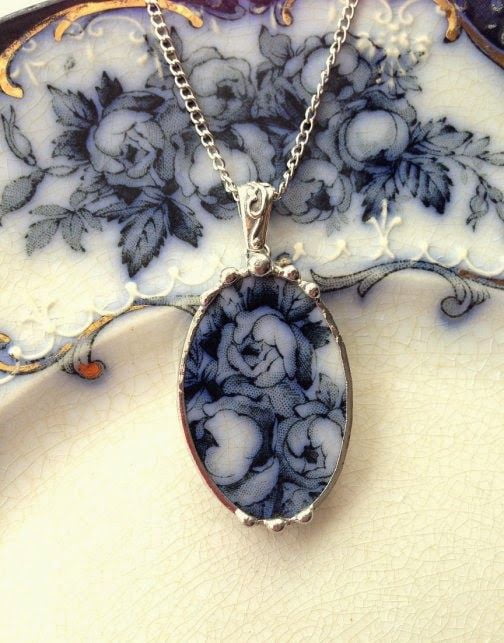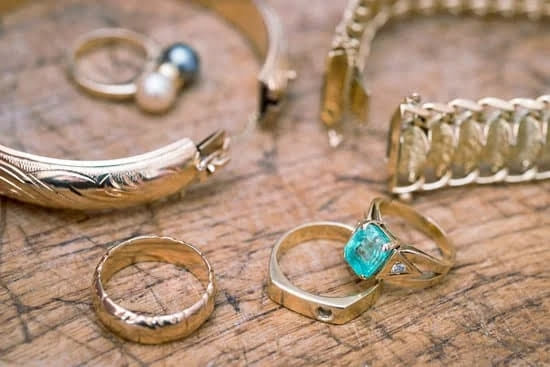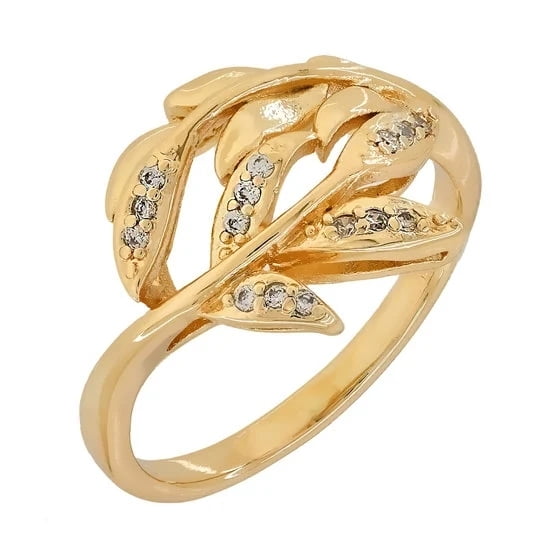Have you ever wondered how to make handmade jewelry findings? Handmade jewelry findings are essential components in the jewelry-making process, serving as the functional and decorative elements that hold a piece of jewelry together.
From clasps to jump rings and ear wires, these findings not only provide practical functions but also add a unique touch to each piece of jewelry. In this article, we will delve into the world of handmade jewelry findings, exploring their significance and providing step-by-step instructions on how to craft your own.
Understanding the tools and materials needed for making handmade jewelry findings is crucial for successful crafting. From basic tools like pliers and wire cutters to various types of metals and beads, we will provide a detailed list of essential items required for this creative endeavor. Additionally, we will discuss the different types of findings and their specific uses in jewelry making, allowing you to gain an in-depth understanding of their role in creating stunning handmade pieces.
From crafting sturdy clasps to making customized ear wires for earrings, we will provide comprehensive guides on creating various types of handmade jewelry findings. Whether you are a beginner or experienced jeweler, our step-by-step instructions will help you master the art of making your own unique and professional-quality findings. So let’s dive into the world of handmade jewelry findings and unleash your creativity.
Tools and Materials
When it comes to making handmade jewelry findings, having the right tools and materials is essential to ensure that your creations are not only beautiful but also durable. The first step in making handmade jewelry findings is to gather all the necessary tools and materials.
Some of the essential tools you’ll need include round-nose pliers, chain-nose pliers, wire cutters, a metal file, a mandrel or dowel in various sizes, a torch (if working with metals), and a hammer. These tools will help you manipulate and shape metal wire or sheet into the desired findings for your jewelry pieces.
In addition to the tools, there are specific materials required for creating handmade jewelry findings. For example, if you’re making clasps or jump rings, you’ll need metal wire of different gauges and types such as sterling silver, gold-filled, copper, or brass.
If crafting ear wires, consider using hypoallergenic materials like titanium or niobium for those with sensitive ears. Other materials to have on hand include earring backs and stoppers, solder (if using a torch), liver of sulfur for patina (if desired), polishing cloths and compounds for finishing touches.
Understanding how to make handmade jewelry findings begins with selecting high-quality tools and materials. With the right resources at your disposal, you can create sturdy and unique findings that will enhance your jewelry designs. Whether you’re a beginner or experienced artisan, having these fundamental supplies will set you on the path to crafting beautiful handmade findings for your jewelry projects.
Types of Findings
Handmade jewelry findings are essential components in jewelry making, as they serve both functional and decorative purposes. These findings, such as clasps, jump rings, and ear wires, are crucial for securing and embellishing jewelry pieces, adding a personal touch to each creation. Understanding the different types of findings and their specific uses is important for any jewelry maker looking to create unique and high-quality pieces.
Clasps are one of the most commonly used findings in jewelry making. They come in various designs, including lobster clasps, spring rings, and magnetic clasps, each offering different levels of security and aesthetic appeal. Jump rings are another essential finding that is used to connect different components of a piece together.
They can be made in various sizes and metal types to suit the specific requirements of a jewelry project. Ear wires, on the other hand, are crucial for earrings as they provide both functionality and design elements to the piece.
Understanding how to make handmade jewelry findings allows for a more personalized approach to jewelry making. By crafting your own clasps, jump rings, and ear wires, you have full control over the design and quality of these components.
This level of customization can elevate your jewelry pieces and set them apart from mass-produced items. Additionally, creating your own findings can also be cost-effective in the long run, as you can tailor them to fit your exact needs without having to rely on store-bought options.
| Types of Findings | Specific Uses |
|---|---|
| Clasps | Securing jewelry pieces |
| Jump Rings | Connecting different components together |
| Ear Wires | Providing functionality and design elements to earrings |
Making Clasps
Gather Your Materials and Tools
Before you start making your own clasps, it’s essential to gather all the necessary materials and tools. You will need metal wire (such as sterling silver or gold-filled wire), round nose pliers, chain nose pliers, wire cutters, hammer, bench block, and a file. The type of metal wire you choose will depend on the design and durability of your clasp.
Forming the Clasp
To begin making the clasp, start by cutting a piece of metal wire to your desired length using the wire cutters. Then use the round nose pliers to create a loop at one end of the wire.
This loop will serve as the attachment point for connecting your clasp to the other end of the jewelry piece. Next, use the chain nose pliers to bend and shape the remaining portion of the wire into a hook or any other design that fits your jewelry piece.
Finishing Touches
Once you have formed the basic shape of your clasp, place it on a bench block and gently hammer it to flatten and harden the metal. This process will add strength to your clasp while also shaping it further. Use a file to smooth out any sharp edges or rough areas on the clasp. Finally, you can add texture or patina to your clasp for added visual interest.
By following these step-by-step instructions on how to make handmade jewelry findings like clasps, you can create beautiful and functional closures for your handmade jewelry pieces that truly stand out.
Creating Jump Rings
To make jump rings, you will need the following tools and materials:
- Round nose pliers
- Wire cutter
- Mandrel or a cylindrical object (such as a pen or dowel)
- Metal wire (in your desired gauge and metal type)
- Fine-grit sandpaper
- Polishing cloth
- Safety goggles
Now that you have gathered all the necessary tools and materials, follow these steps to create your own jump rings:
- Choose the appropriate gauge and metal type for your wire based on the specific needs of your jewelry project.
- Cut a piece of wire using the wire cutter to start creating the jump rings.
- Wrap the wire around a mandrel or cylindrical object of your choice, ensuring that it is tightly wound to avoid any gaps.
- Use the wire cutter to snip off the coiled wire, creating individual jump rings.
- Use round nose pliers to open and close the jump rings as needed for your jewelry design.
- Lastly, use fine-grit sandpaper to smooth any rough edges and polish the jump rings with a polishing cloth for a professional finish.
By mastering how to make handmade jewelry findings like jump rings in various sizes and metal types, you can add a personal touch to your jewelry designs while ensuring their durability and quality. Whether you’re creating delicate earrings or statement necklaces, custom-made jump rings can take your handmade jewelry pieces to the next level.
Crafting Ear Wires
Basic Ear Wire Design
When it comes to crafting ear wires for earrings, there are various designs to choose from. The most basic design consists of a long, curved wire with a small loop at the end to secure the earring in place. This classic design is versatile and can be customized by adding beads, coils, or other decorative elements to enhance the overall look of the earrings.
Techniques for Making Ear Wires
One popular technique for making ear wires is using pliers to shape and form the wire into the desired design. Additionally, wire wrapping and hammering techniques can add texture and visual interest to the ear wires. It is important to use high-quality jewelry wire that is durable and hypoallergenic, such as sterling silver or surgical stainless steel, to ensure the longevity and comfort of the earrings.
Customizing Ear Wires
To create customized ear wires, jewelry makers can experiment with different lengths, shapes, and decorative elements to suit their unique style and aesthetic preferences. Adding small gemstones, charms, or intricate wire work can elevate the design of the ear wires and make them stand out as a focal point of the earrings. By customizing ear wires, jewelry makers have the opportunity to create one-of-a-kind pieces that reflect their creativity and craftsmanship.
Crafting handmade jewelry findings such as ear wires allows for endless creative possibilities in jewelry making. By mastering these techniques and designing personalized ear wires, jewelry makers can elevate their craft and create truly unique pieces that showcase their individual style and artistry.
Finishing and Polishing
When it comes to creating handmade jewelry findings, one of the most important steps is the finishing and polishing process. This step is essential to not only ensure the durability and longevity of the findings but also to give them a professional look. There are several techniques that can be used to achieve this, including polishing and adding patina.
To start the finishing process, it is important to first clean the handmade jewelry findings thoroughly. This can be done using a mild soap or jewelry cleaner to remove any dirt, debris, or residues from the findings. Once cleaned, they should be dried completely before moving on to the next step.
Polishing is an essential part of finishing handmade jewelry findings as it helps to smooth out any rough edges or surfaces, giving them a sleek and professional appearance. This can be done using a polishing cloth or jewelry polishing machine depending on the type of metal used for the findings. It’s important to use gentle pressure and circular motions when polishing to avoid causing damage to the findings.
Adding patina is another technique that can be used to enhance the appearance of handmade jewelry findings. Patina adds depth and character to metal findings by creating an aged or weathered look. This can be achieved using various chemical solutions or natural ingredients like egg yolk or liver of sulfur. The patina should be applied carefully and selectively to achieve the desired effect without overpowering the overall look of the findings.
| Handmade Jewelry Findings Finishing Techniques | Description |
|---|---|
| Cleaning | Thoroughly clean handmade jewelry findings with mild soap or jewelry cleaner before starting the finishing process. |
| Polishing | Use a polishing cloth or machine to smooth out rough edges and surfaces of the findings for a professional look. |
| Adding Patina | Enhance the appearance of metal findings by adding patina using chemical solutions or natural ingredients for an aged look. |
Incorporating Findings
In conclusion, learning how to make handmade jewelry findings can truly elevate your craft and add a unique touch to your jewelry pieces. By mastering the art of creating clasps, jump rings, and ear wires, you have the opportunity to customize every aspect of your designs and ensure that they are both sturdy and stylish.
The tools and materials required may seem daunting at first, but with dedication and practice, you’ll soon find yourself crafting professional-grade findings in no time.
Moreover, incorporating handmade findings into your jewelry designs allows for endless creative possibilities. Whether it’s adding a personal touch to a necklace with a custom clasp or experimenting with different ear wire designs for earrings, handmade findings can truly set your pieces apart. The versatility of handmade findings also enables you to seamlessly integrate them into various styles and aesthetics, ensuring that each piece of jewelry is truly one-of-a-kind.
Additionally, the process of finishing and polishing handmade jewelry findings should not be overlooked. Taking the time to add a professional touch to your creations can greatly enhance their overall look and improve their durability. However, the most important aspect of learning how to make handmade jewelry findings is the satisfaction of knowing that you have played a significant role in every step of the jewelry-making process, from start to finish.
Frequently Asked Questions
What Are Jewelry Findings Made Of?
Jewelry findings are typically made of metal such as gold, silver, brass, or copper. These findings include clasps, jump rings, ear wires, bead caps, and other components used to assemble jewelry pieces.
What Do You Need to Make Handmade Jewelry?
To make handmade jewelry, you will need a variety of tools and materials. This includes basic tools like pliers, wire cutters, and crimping tools. Additionally, you’ll need beads, charms, pendants, and stringing materials like wire or cord.
What Findings Do You Need to Make a Necklace?
To make a necklace, you will need specific findings such as a clasp to fasten the ends of the necklace together. Other findings like jump rings and bead tips may also be necessary to attach the clasp and finish the ends of the necklace neatly.
Additionally, if using beads or pendants in your necklace design, you will need headpins or eyepins to create dangles or attach them to the main part of the necklace.

Welcome to my jewelry blog! My name is Sarah and I am the owner of this blog.
I love making jewelry and sharing my creations with others.
So whether you’re someone who loves wearing jewelry yourself or simply enjoys learning about it, be sure to check out my blog for insightful posts on everything related to this exciting topic!





